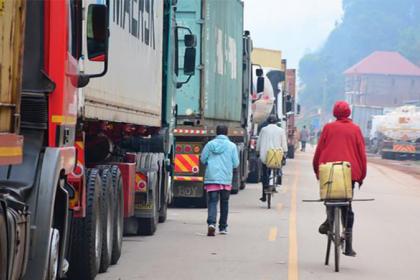
This publication is the outcome of a joint project of UNCTAD and the Common Fund for Commodities (CFC) on landlocked developing countries entitled “Identifying Growth Opportunities and Supporting Measures to Facilitate Investment in Commodity Value Chains in Landlocked Countries”.
Landlocked developing countries (LLDCs) face multiple development challenges. On the one hand, they incur higher trade costs due to their geographical remoteness, inadequate transport infrastructure, and poor trade logistics.
These problems are compounded by the challenges of multiple border crossings and diverging transport systems and regulations in transit countries. On the other hand, many LLDCs lack crucial productive capacities and are dependent on the exports of primary commodities, rendering them vulnerable to global commodity price shocks.
In 2014, the Second United Nations Conference adopted the Vienna Programme of Action for LLDCS for the decade 2014–2024 (VPoA) to address these trade and development challenges. In 2019, five years into implementation of the VPoA, the General Assembly will undertake a comprehensive midterm review of its progress pursuant to resolution UNGA 72/232.
Preliminary assessments of progress, including by UNCTAD, show that, five years into the implementation of the priority areas contained in the VPoA, the socioeconomic conditions of LLDCs have not shown significant improvements.
This report forms part of UNCTAD’s substantive contribution to the midterm review of the VPoA. It examines the micro- and macro-economic policies as well as the institutional and regulatory measures required to promote economic and export diversification in four Asian landlocked economies: Kazakhstan, Turkmenistan, Mongolia and Bhutan.
The four countries are characterized by high levels of commodity-dependence, challenging geographical and historical contexts, and low socioeconomic outcomes.
The report argues that, despite complex trade and development challenges, the countries studied have significant potential to diversify their economies into the production and export of higher-value-added products in several sectors.
These include agriculture (including agro-processing), light manufacturing (such as textiles, leather, and leather products), information and communications technology, tourism, and the construction sectors.
Using the product-space approach, the report also identifies specific products that hold potential for export expansion and diversification in each country. For instance, agriculture and, to a lesser extent, manufacturing, are promising sectors for diversification, including niche products such as mandarin oranges (Bhutan), cashmere (Mongolia), silk (Turkmenistan), and cereal (Kazakhstan).
The rich cultural heritage and varied geography of these countries are also conducive to tourism. In addition, there can be synergies between tourism and improvements in the quality of some local food and manufacturing products. However, a number of improvements in micro- and macro-economic policies and institutions are necessary to realize this potential.




